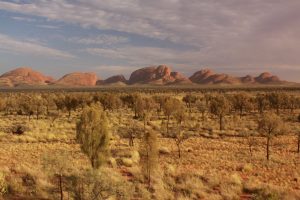 Here is my personal journey, which started in Sydney and ended up in me finding the most peaceful yet mind-blowing place on Earth – the Kata Tjuta stones in the Northern Territory.
Here is my personal journey, which started in Sydney and ended up in me finding the most peaceful yet mind-blowing place on Earth – the Kata Tjuta stones in the Northern Territory.
Ticking things off
When you go to any country in the world for the first time there are certain places you need to tick off your to-do list. In Australia those places are the Gold Coast in Queensland and of course, Sydney. The Opera House, Bondi Beach, the Harbour Bridge – I did it all with my equally adventurous traveling companion.
There’s no denying these iconic spots were great — and I highly recommend visiting them — but the real magic doesn’t lie in the cities, which when you get down to the bare bones of it are just like any other city in the world.
The true Australia, the Australia that you see on the postcards is far, far, far away from where around 90 per cent of the population live. It’s not easy to get to, but it’s well worth the arduous journey to get there. I mean, what’s the point of traveling without some real adventure?
Reaching the Outback
The ‘Outback’ is such a general term to describe probably over 75% of the country. That’s right, almost the whole of Australia is well, nothing. Nothing is said loosely – because really, there is a lot out there. And anyone that tells you otherwise just doesn’t appreciate Mother Nature at her best. There might not be a McDonald’s or even an indoor toilet in some parts – but that just makes it even more appealing!
We started our venture into the outback in the South Australian capital of Adelaide. One of the country’s smallest cities (most call it a large country town), it’s the perfect starting point for heading out into the bush. It’s worth spending a couple of days there exploring the surrounding wine regions if you have time – the Barossa is stunning.
There aren’t a whole lot of options for getting into the nitty gritty of the outback – good luck with public transport. Only slightly concerned by the stories you hear about people running out of gas/water/food while driving across Australia, we decided to hire a car.
First stop? Coober Pedy. Coober Pedy is one of those places that you look back on after you’ve been there and go – does that place really exist?! It was almost like the set of a movie, a very awesome movie, mind you. The small town around six hours drive north of Adelaide is famous for its opal mining and its extreme temperatures. But the people who live there are smart – the majority of their buildings are underground. It’s incredibly surreal!
We stayed in a bed and breakfast, which was completely underneath the ground, and it really did work – it definitely took the edge off the 100F heat, although there’s no denying it was still pretty damn hot.
After three nights and with a couple of token opals added to our already bulging suitcases, we jumped back in the car and kept driving north.
The Red Centre
Now I don’t want to denounce the sheer amazingness of Uluru (also known as Ayer’s Rock), which is a must-see on every tourist’s itinerary, but we’ve all seen and heard a billion photos and stories about it.
In the same national park – Uluru-Kata National Park – lies what turned out to be a changing moment in my life. One of those rare moments where the world stops and you literally go ‘wow’. I had this experience at Kata Tjuta, also known as The Olgas.
Kata Tjuta is a group of large rock formations with similar geology to Uluru. The term ‘Kata Tjuta’ is an ancient Aboriginal term meaning ‘many heads’ – which is apt if you see them. We heard many different conflicting stories and legends about the rocks while we were there – some from locals, others from tourist guides. But what did become clear was that they are a sacred site for Aboriginals. What was particularly interesting is that Aboriginal women are not allowed to look at the rocks.
It’s no wonder these rocks are sacred, you’ll understand when you see them – there’s an exhilarating aura surrounding them that makes you know they must be special.
If you get the opportunity to see them from both land and air – I highly recommend it. From the ground they’re incredible, but from the air there are just no words to describe them – and the surrounding national park. When you see the region with a bird’s eye view it makes you realize just how isolated you are – you feel vulnerable yet calm.
Geology of Kata Tjuta Stones
As a former geology student, I naturally have a (sometimes unhealthy) fascination with rocks and how they got there. But I think anyone can appreciate just how amazing the geological history of these formations really is.
Kata Tjuta is made up of 36 different sized ‘stones’, which cover around 21.68 km2 and sit nearly 3,500 feet above sea level. In other words, they’re huge. They are made up of a variety of different rock types including granite and basalt, which is cemented together with the red sandstone that is responsible for the Australian outback’s famous bright red backdrop.
The rocks, and other surrounding geological features, are thought to have formed approximately 850 million years ago – so they’ve been there for a while.
I don’t want to spoil it all for you – although any traveler knows that even the best writers can’t find the words to describe something truly spectacular, so there’s still plenty more magic for you to experience for yourself.

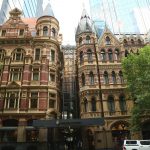
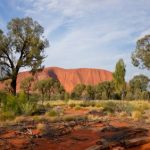

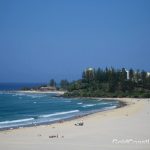
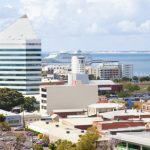

Leave a Reply